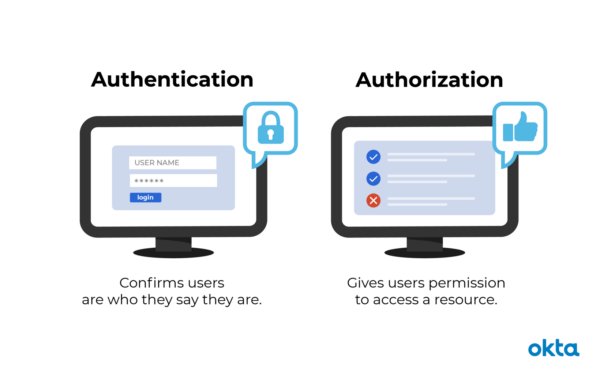Authentication is a crucial aspect of cybersecurity, serving as the primary mechanism for verifying the identity of users and systems attempting to access resources or services. In the context of network security and online services, authentication plays a pivotal role in safeguarding sensitive information and preventing unauthorized access.
Understanding Authentication
Authentication involves the process of confirming the identity of a user, device, or entity seeking access to a system, network, or application. It is typically achieved through the presentation of credentials, which can include:
- Username and password: The most common form of authentication, requiring users to input a unique username and corresponding password.
- Biometric data: Utilizing physiological or behavioral characteristics such as fingerprints, facial recognition, or voice patterns for identity verification.
- Two-factor authentication (2FA) or multi-factor authentication (MFA): Adding an extra layer of security by combining multiple authentication factors, such as a password and a one-time code sent to a mobile device.
Authentication mechanisms rely on various technologies and protocols, including:
- LDAP (Lightweight Directory Access Protocol): A protocol used for accessing and managing directory information services, often employed for centralized authentication.
- OAuth (Open Authorization) and OpenID Connect: Protocols facilitating secure authorization and authentication for web and mobile applications.
- Kerberos: A network authentication protocol that enables secure communication over a non-secure network.
Key Features of Authentication
Effective authentication solutions offer several key features to ensure robust security:
- Security: The authentication process should employ strong encryption and secure protocols to prevent unauthorized access and data breaches.
- Scalability: Authentication systems should be capable of handling large numbers of users and devices without compromising performance.
- Flexibility: Supporting various authentication methods and protocols allows organizations to adapt to evolving security requirements and user preferences.
- Auditability: Comprehensive logging and monitoring capabilities enable organizations to track authentication events and identify suspicious activities.
- Integration: Seamless integration with existing identity management systems and directory services streamlines user management and enhances security posture.
Types of Authentication
Authentication methods can be categorized into several types based on the factors used to verify identity:
| Type | Description |
|---|---|
| Single-factor authentication | Relies on a single authentication factor, such as a password. |
| Two-factor authentication | Requires the presentation of two distinct authentication factors for access. |
| Multi-factor authentication | Involves the use of two or more authentication factors for identity verification. |
Ways to Use Authentication
Authentication is employed across various domains and applications to control access and protect sensitive information. Some common use cases include:
- Access control: Restricting access to confidential data, systems, or physical locations based on user identity and permissions.
- User authentication: Verifying the identity of users accessing online accounts, applications, or services to prevent unauthorized access.
- Device authentication: Authenticating devices connecting to networks or IoT (Internet of Things) platforms to ensure only trusted devices can access resources.
- Transaction authentication: Validating the identity of individuals conducting financial transactions or accessing sensitive information.
Challenges and Solutions
Despite its importance, authentication presents several challenges, including:
- Credential theft: Attackers may attempt to steal passwords or compromise authentication tokens to gain unauthorized access.
- User convenience vs. security: Balancing security requirements with user convenience can be challenging, as stronger authentication measures may introduce friction.
- Phishing attacks: Malicious actors may use social engineering tactics to trick users into divulging their credentials or bypassing authentication mechanisms.
To address these challenges, organizations can implement measures such as:
- Password policies: Enforcing strong password requirements and regularly prompting users to update their passwords can mitigate the risk of credential theft.
- User education and awareness: Educating users about phishing threats and promoting security best practices can help prevent successful attacks.
- Advanced authentication technologies: Deploying biometric authentication or multi-factor authentication can enhance security without sacrificing usability.
Characteristics and Comparisons
| Characteristic | Authentication | Authorization |
|---|---|---|
| Definition | Verifies the identity of users or systems seeking access to resources or services. | Determines whether an authenticated user or system has permission to access specific resources or perform certain actions. |
| Key focus | Identity verification | Access control |
| Examples | Username/password, biometrics, two-factor authentication | Role-based access control, access policies |
| Scope | Initial login/authentication | Ongoing access control and permissions |
Future Perspectives
The future of authentication is marked by advancements in biometric technologies, artificial intelligence, and decentralized identity systems. Emerging trends include:
- Biometric authentication: Continued adoption of biometric authentication methods, including facial recognition and behavioral biometrics, for enhanced security and user experience.
- Zero-trust security: The adoption of zero-trust architectures, where authentication and authorization are continuously evaluated based on contextual factors such as device health and user behavior.
- Decentralized identity: The rise of decentralized identity frameworks leveraging blockchain technology to provide individuals with greater control over their digital identities while ensuring privacy and security.
VPN and Authentication
Virtual Private Networks (VPNs) play a crucial role in enhancing authentication and security for remote access and communications. By encrypting data transmitted between users and network resources, VPNs help safeguard sensitive information from interception and unauthorized access. Additionally, VPNs often incorporate authentication mechanisms to verify the identity of users before granting access to corporate networks or sensitive data.
Resources for Further Information
For more information about authentication and related topics, refer to the following resources:
- NIST Special Publication 800-63: Digital Identity Guidelines – https://csrc.nist.gov/publications/detail/sp/800-63/rev-4/final
- OWASP Authentication Cheat Sheet – https://cheatsheetseries.owasp.org/cheatsheets/Authentication_Cheat_Sheet.html
- Authentication and Authorization for Google APIs – https://developers.google.com/identity/protocols/oauth2
- Zero Trust Security: A New Model for Securing Networks – https://www.csoonline.com/article/3247848/zero-trust-security-a-new-model-for-securing-networks.html
Authentication serves as the cornerstone of cybersecurity, providing organizations and individuals with the means to protect valuable assets and sensitive information from unauthorized access and malicious activities. By implementing robust authentication solutions and staying abreast of emerging trends and technologies, organizations can effectively mitigate security risks and safeguard their digital assets.


